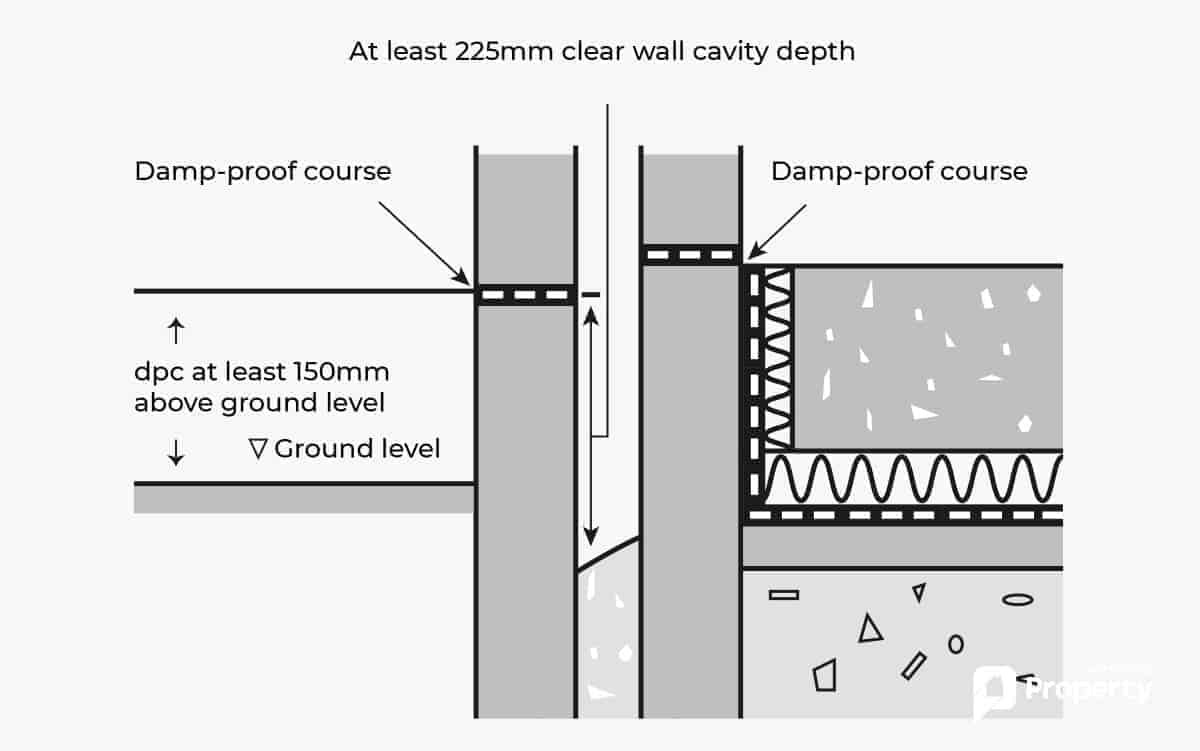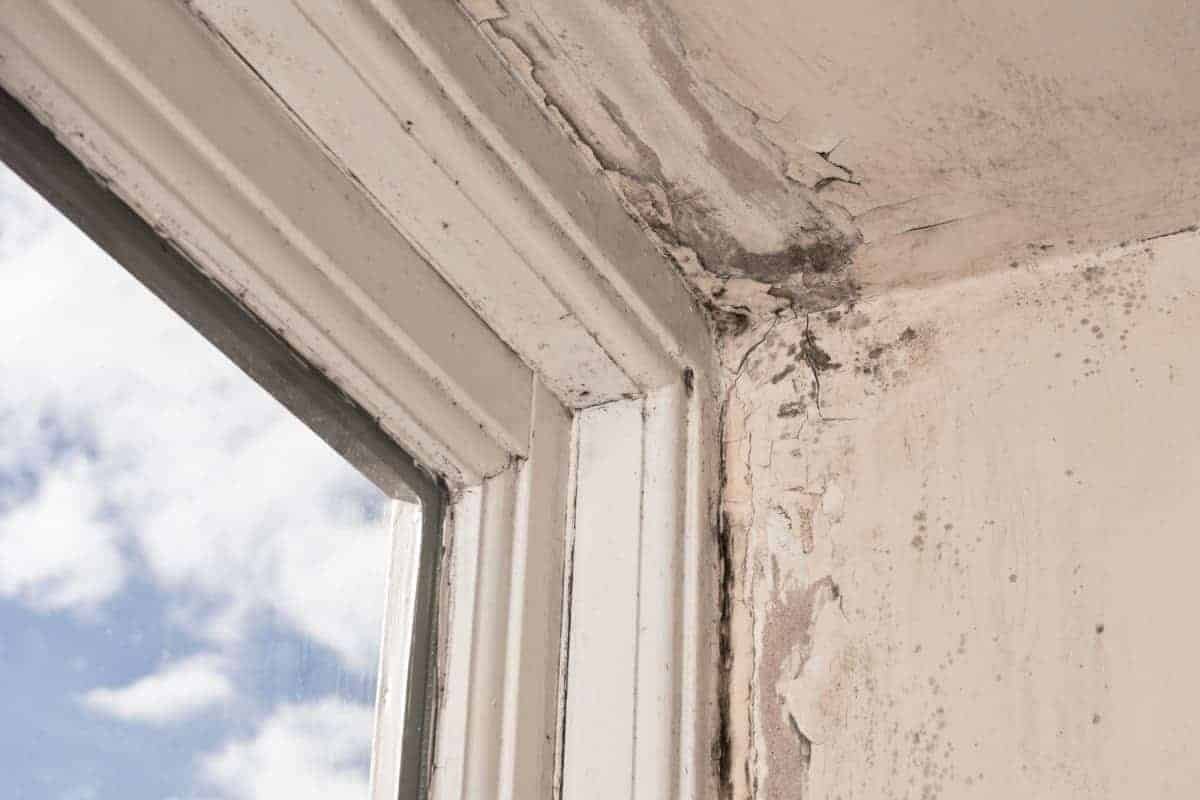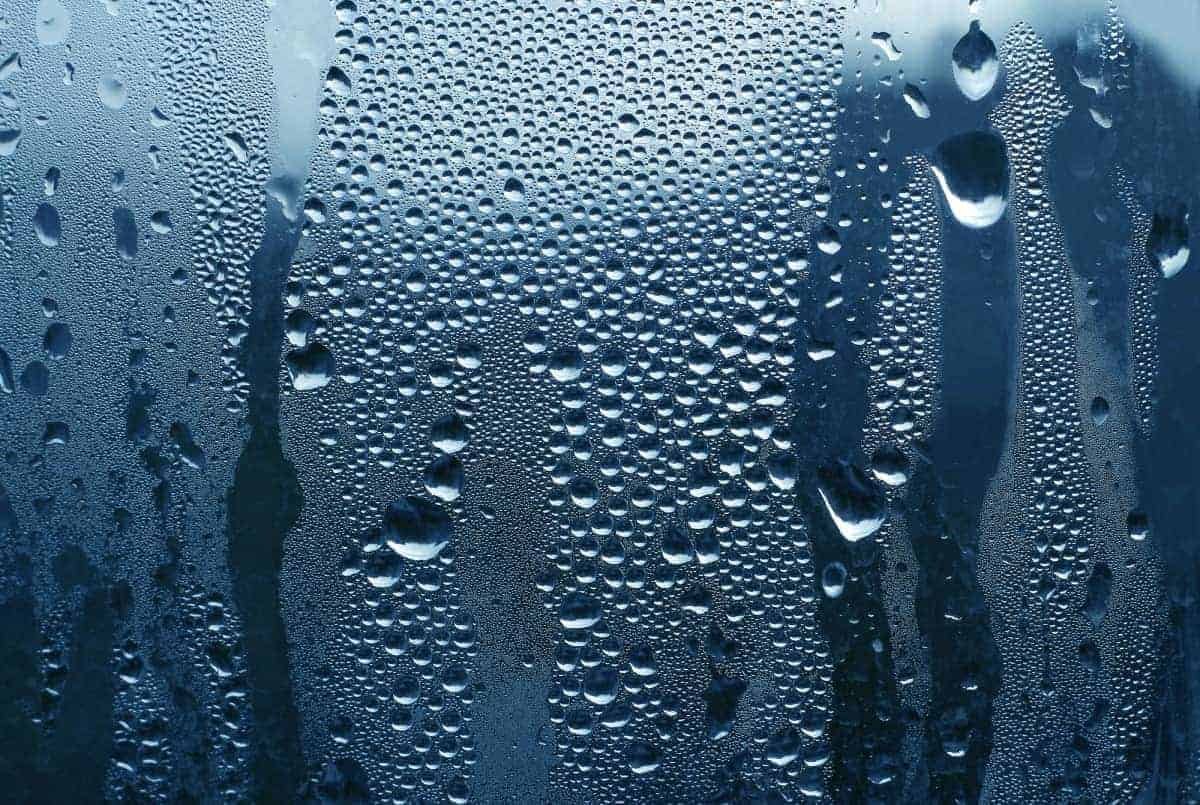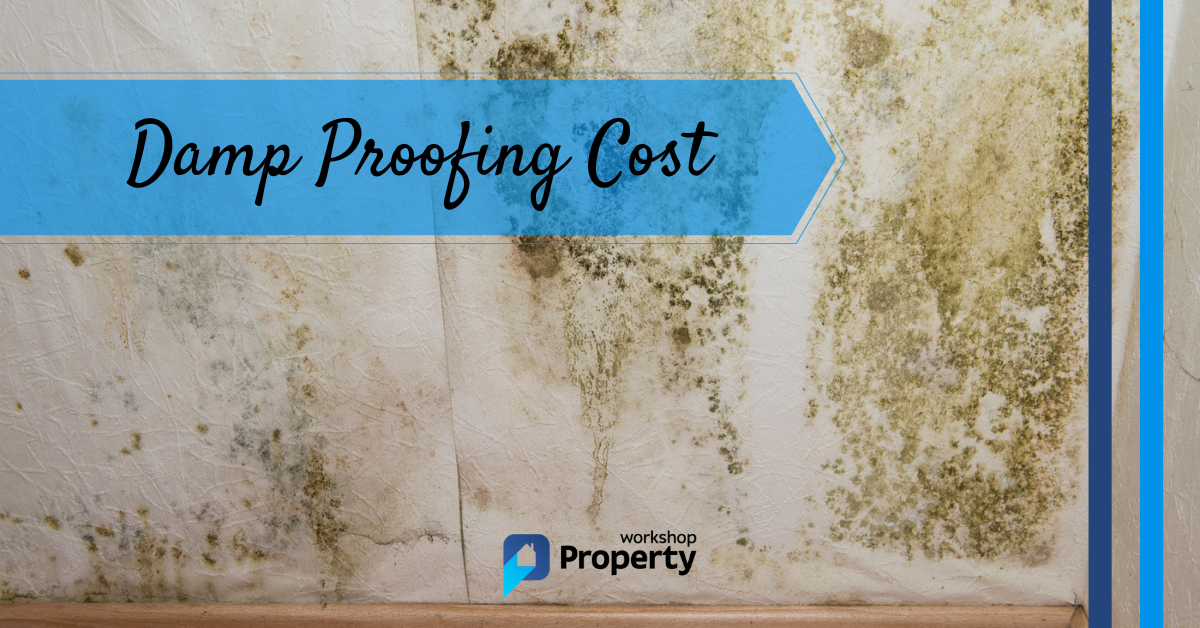Have you discovered dampness in your home? Whether it’s a slight musty smell, a mould patch or a tide mark, it’s time to tackle your damp problem.
But how do you know if you need a full damp proof course? What is it, and how much does damp proofing cost? In this guide, we answer all these questions and more…
In a Hurry? Find top-rated damp proofing specialists in your area by clicking the button below:
2024 Damp Proofing Cost Summary
All prices below include labour (unless stated as ‘DIY’) and VAT.
| Damp Proofing Job | Average Cost |
|---|---|
| Rising Damp — Chemical DPC | £500–£5,000 (see Table 1 for more details) |
| Rising Damp — Physical DPC | £130 per m² |
| Rising Damp — Ground Excavation | £200–£1,500 (see Table 2 for more details) |
| Penetrating Damp — Water-repellant coating (DIY) | £15–£25 per litre (each litre covers approx 8–13m²) |
| Penetrating Damp — Clearing out cavity walls | £150 per wall |
| Penetrating Damp — Fixing roof tiles | £60–£110 per m² |
| Penetrating Damp — Fixing ‘pointing and flashing’ | £325 per wall |
| Penetrating Damp — Replacing guttering | £500–£750 |
| Condensation — Extractor fan installation | £175–£275 |
| Condensation — Dehumidifier costs (DIY) | £75–£110 |
| Leaks and Fitting Condensation Trap — Plumber costs | £60–£75 per hour (+£100 call-out charge) |
| Damp Survey | £150–£350 |
Types of Damp
Before deciding whether your property needs damp proofing, you must first identify the damp type and its cause.
There are four types of damp — Rising Damp, Penetrating Damp, Condensation and Leaks. This section briefly looks at each type and how best to resolve it.
Pro Tip: For more information, check out our comprehensive guide to damp.
Rising Damp

Rising damp is caused by ground moisture rising and seeping into walls. Though relatively uncommon, it can be the most problematic damp issue to resolve.

Check your existing physical damp proof course (DPC), which should sit 150mm above ground level (see Fig 1 above). If the soil level exceeds the DPC, it needs digging out (see Table 2 below). Also, patios installed above the DPC need lowering.
Building regulations made DPC compulsory for all properties built in London after 1875. A thin strip or a grill at the base of the wall indicates the presence of a DPC.
Penetrating Damp

Penetrating damp is outside moisture infiltrating external walls. To resolve this issue, check your guttering system and look for hairline cracks in rendering or brickwork. Blockages in your guttering can cause rainwater to bypass pipes, resulting in prolonged contact with external walls.
If your property has a cavity wall, debris may be lodged between the outer and inner walls (aka ‘leaves‘), creating a bridging effect. Similarly, cavity wall insulation could pass moisture to the inner walls if the outer wall has deteriorated through driving wind and rain.
Other causes of penetrating damp include the following:
- Roof leaks due to missing slate or tiles.
- Damaged pointing and flashing.
- Dilapidated or poorly fitted windows.
Condensation

Moisture builds within properties lacking proper ventilation, resulting in mould spores and mildew.
Condensation is the easiest problem to resolve. For example, simple things like opening windows, drying clothes outside, and using extractor fans in bathrooms and kitchens help reduce moisture in the air.
Pro Tip: Fitting a condensation trap is a great way to reduce condensation.
According to ‘Which?‘, simply setting your heating to a lower temperature can help prevent dampness. Another option is to invest in a dehumidifier to reduce and control humidity.
Leaks
Water enters your home through a series of pipes that feed appliances such as boilers, washing machines, showers and taps. Each of these pipes and appliances can potentially create or contribute to a damp issue in the form of leaks.
UK Damp Proofing Costs in 2024
If your dampness is caused by condensation or leaks, you should be able to rectify it by following the advice above or hiring a plumber or builder.
However, if you’re suffering from rising or penetrating damp, read on because these issues are more complicated to resolve.
Treating Rising Damp
A damp proof course (DPC) is the best way to prevent and treat rising damp. There are two main types of DPC — Physical (e.g. sheets of high-density polyethylene) or Chemical (e.g. DPC injection cream).
Physical DPC
Plastic DPCs within the wall (see Fig 1 above) create a physical barrier preventing water from moving up a wall.
Because of the high costs associated with installing a physical DPC, this guide focuses on chemical DPCs. Besides, most UK homes already have a physical DPC, especially ones built after 1875.
However, one economical way of fixing an ineffective DPC is to excavate the soil around it so it’s 150mm above the ground (see Fig 1 above and Table 2 below).
Chemical DPC
A chemical DPC injected into an external wall is the most cost-effective and common method for treating rising damp.
A water-repelling chemical cream is injected horizontally along a mortar joint at least 150mm above ground level. Each hole should be 12mm in diameter and be 100–120mm apart, as demonstrated in the video below.

Other, less common, rising damp treatments include Electro Osmosis Damp Proofing and Magnetic DPCs.
Treating Penetrating Damp
Assuming you’ve eliminated the other causes of penetrating damp listed above (e.g. leaky guttering, missing roof tiles, etc.), treat porous bricks with anti-mould paint. This special paint costs between £15 to £25 per litre, and each litre covers around 8–13 square metres.
These water-repellant treatments prevent moisture from entering your property while still allowing the walls to breathe. They’re also easy to apply yourself.
Damp Survey Costs
If you’re suffering from rising or penetrating damp, we recommend an independent damp survey before hiring professionals. A damp survey costs between £150–£350 and is well worth the investment.
A surveyor will conduct an investigation and discover the cause. They’ll also advise on a course of action and estimate the costs involved.
DIY Chemical DPC Costs (materials only)
Note: While attempting this job yourself is possible, we recommend hiring a professional.
When obtaining quotes, follow these tips:
- Get at least three different quotes for the work required.
- Ask for a breakdown of the costs involved, especially for any additional/remedial work such as re-plastering or paving.
- Ask for references and check online reviews.
If you decide to DIY, expect to pay around £30 for a 600ml cartridge. Also, you may need to remove and replace existing plaster, so consider these costs too.
To determine the quantity of chemical DPC you need, use the table below as a guide. For more info, check out this calculator.
| Wall Type | Wall Length (linear metres) | Wall Thickness | Quantity |
|---|---|---|---|
| Single | 3m | 115mm | 0.3 litres |
| Solid Double | 3m | 230mm | 0.6 litres |
| Solid Triple Leaf | 3m | 345mm | 0.9 litres |
| Cavity | 3m | 2×115mm | 0.6 litres |
Note: As chemical DPC is injected along a horizontal line, we only need to measure linear metres, not square metres.
DPC Cost Tables (full-service)
The tables below show the average costs you can expect to pay professionals for injecting a chemical DPC (Table 1) or excavating soil so the existing physical DPC sits at least 150mm above ground level (Table 2).
Note: Prices vary depending on your location, property size, and work required.
Table 1 — Chemical DPC Injection
This table shows the costs of injecting chemical cream DPCs.
| Work Required | Property Type | Cost |
|---|---|---|
| Chemical (cream) injection damp proofing — one wall | N/A | £500–£900 |
| Chemical (cream) injection damp proofing — whole house | Terraced | £1,000 |
| Semi-Detached | £2,250 | |
| Detached | £5,000 |
Table 2 — Ground Excavation
This table shows the costs of soil excavation if your existing physical DPC is less than 150mm above ground level.
| Work Required | Property Type | Cost |
|---|---|---|
| Ground excavation — one wall | N/A | £200–£350 |
| Ground excavation — whole house | Terraced | £400 |
| Semi-Detached | £600 | |
| Detached | £1,500 |
Don’t fancy doing this job yourself? Find top-rated damp proofing specialists in your area by clicking the button below:
Final Thoughts
If there’s an underlying damp issue in your property, papering over the cracks (so to speak) won’t solve the problem. Left untreated, serious damp issues can affect your property’s structure and stability.
If you’re a DIY enthusiast, you may consider resolving rising and penetrating damp yourself. However, for most cases, we recommend hiring a top-rated damp professional in your local area via Rated People.

